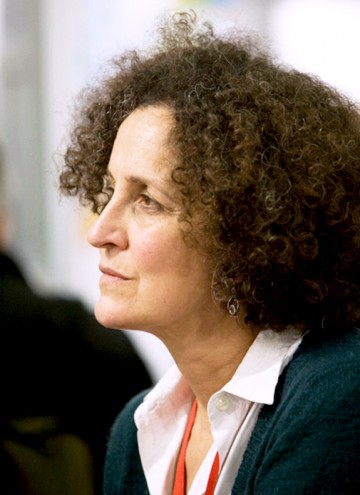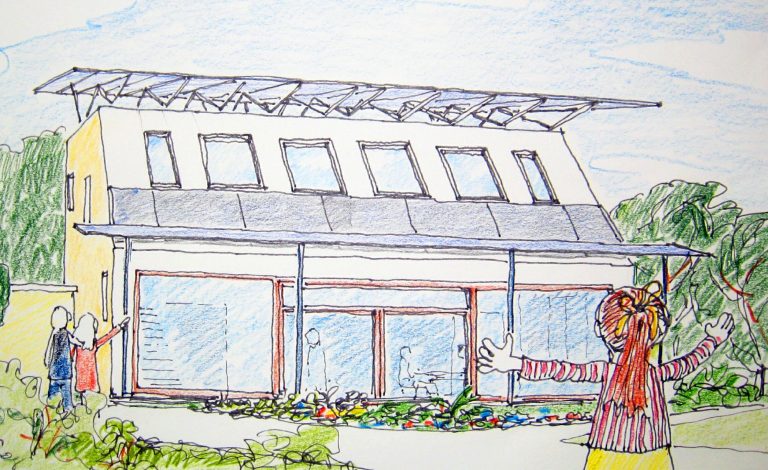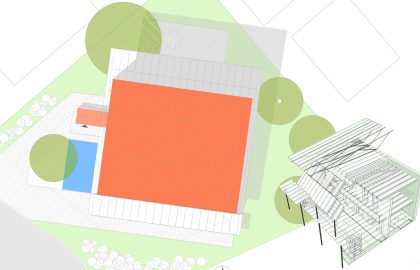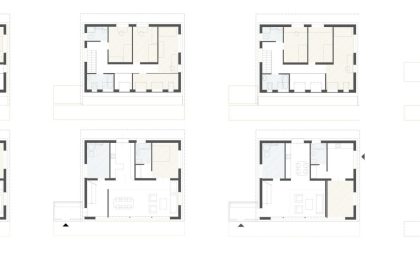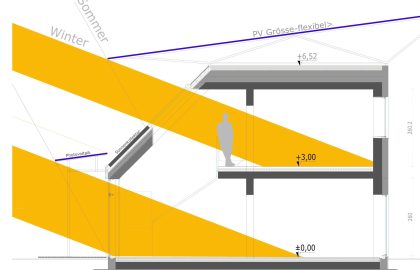The energy concept defines the architecture and image of this building. Modernity and the demonstrated potential for a possible solar future are intended to bring the building into harmony with the environment. The goal was to find a building form that would alleviate people’s tensions and fears in the face of impending environmental catastrophe by presenting an alternative in the construction sector. To this end, this building harvests all the sun that shines on it: It brings plenty of daylight into the house (direct in winter, indirect in summer), simultaneously harnessing the sun passively for heating, employing solar thermal energy (which requires almost no electricity), and harnessing the sun to generate electricity. This allows more energy to be made available for the building and its mobility than is consumed over the course of a year. An appropriate architectural form was found for all these solar uses and coordinated with the specified material grid. The large photovoltaic solar array was also designed as a signal and indicator for the cars passing quickly on the nearby highway. The building’s surplus electricity amounts to 10,887 kWh, which is available for electromobility and fed into the grid. 4,540 kg of CO2 savings per year (from this surplus production) can be offset to offset the CO2 emissions from the construction.

